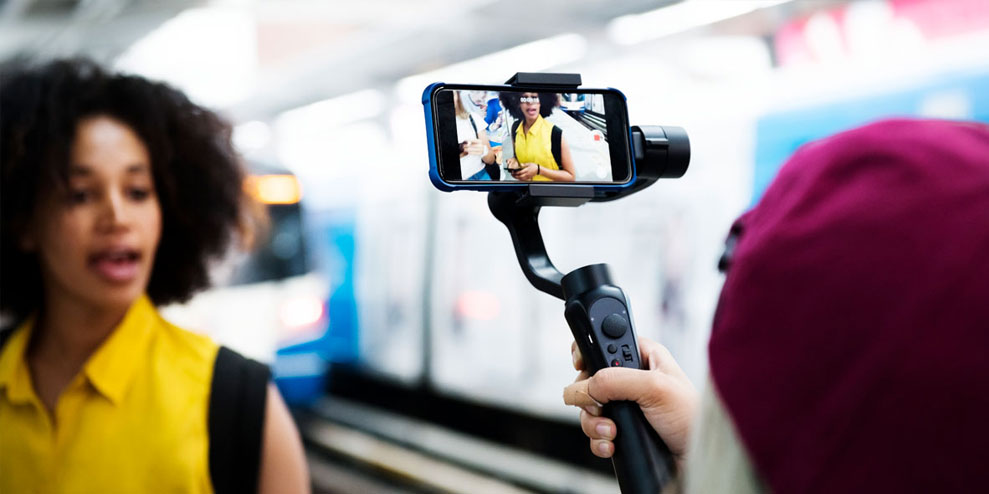The following is a guest post by Brett Zucker, CMO at Monotype.
Chief Marketing Officers and their teams are faced with an everevolving selection of marketing strategies and approaches that makes their job tough to do well. Navigating the complex web of martech, adtech, data platforms, personas and more, all to find the right way to reach and engage with key audiences has never been more difficult, complex or risky. Finding the right approach can be like playing the lottery, while going down the wrong path can cause brands to lose credibility with their customers. One option that has been talked about at length, and is equal parts controversial and promising, is influencer marketing. 
Influencers have taken a lot of flak recently, and some of that is warranted. Virtually every week, you’ll read news stories covering paid-for followers or bots. Large-scale scandals, like the Fyre Festival, and the push from influencers to support it call the entire practice into question, leading many to wonder if in fact, influencer marketing is dead? My take is that the effectiveness of influencers continues to evolve, but it is adding value to today’s marketing mix and will continue to do so in the future. There are a number of reasons why influencer marketing isn’t dead. The first is the impact that influencers have on brands. People generally trust the recommendations of their friends and peers, but it’s difficult for brands to tap into that at scale.
Influencer marketing allows brands to “designate” a peer that can be trusted by the community with which they identify — and the results of this approach speak for themselves. Our own research into why consumers follow and trust influencers has found that nearly half of survey respondents have considered making a purchase after seeing an endorsement by an influencer, and nearly one-third said that they have bought a product based on an influencer’s post. That’s a measurable and significant impact! Are Micro-Influencers the Holy Grail? While the research is very positive, it’s only a snapshot and doesn’t help define what we think will happen with influencers in the future. And for that, I think the best indicator is the rising number of microinfluencers that are emerging. We define micro-influencers generally as those with up to 100,000 followers. Since microinfluencers have smaller audiences, they are better able to tailor their messages and truly connect with their followers.
Mega-influencers, on the other hand, are often celebrities and even when they are not, the sheer size of their audiences make it difficult to really connect or identify with their followers. While their influencer marketing posts may reach an enormous number of people, they may only apply to a miniscule part of that audience and be lost in the churning sea of posts they publish for other brands. In fact, a study by influencer marketing company Markerly found that as an influencer’s follower total rises, the rate of follower engagement (likes and comments) decreases. It also found that influencers with fewer than 1,000 followers generally received likes on their posts 8 percent of the time. Influencers with more than 10 million followers received likes only 1.6 percent of the time, indicating an inverse relationship between the scale of the influencer’s reach and his/her levels of engagement. In addition to more effectively connecting with their audiences, micro-influencers are also the ones that are innovating.
The most popular social media platforms allow micro-influencers to cater to niche communities. If a brand wants to find an influencer that speaks to the most passionate fans of a popular video gamer, one that specializes in a specific coding language, or one that sides with the villains in Game of Thrones, it can do so. If a brand wants to do a unique activation or longer-term effort, micro-influencers are more likely to be receptive to those initiatives, and may even be willing to invest more time and energy into making it a success. The most successful brands are the ones that involve their customer communities in their branding efforts, and allow them to participate in the development and evolution of their identities leveraging their ability to create authentic content. Leveraging micro-influencers makes them active participants in engaging customers in a real, authentic way, with messages that are aligned with target customers’ values. Vertical industries, such as fashion, travel and beauty, appear to be leveraging micro-influencers most effectively. They also deliver significantly more engagement on Instagram than other influencer subgroups. Finally, the investment in influencer marketing has continued to grow as an industry over the last few years, according to Influencer Marketing Hub’s recent report. It was a $1.7 billion industry in 2016, increasing to $3 billion in 2017. Growth continued to $4.6 billion in 2018 and is expected to continue its upward trajectory this year to potentially become a $6.5 billion industry. There’s no doubt that there are some bad apples out in the influencer world, but they shouldn’t spoil the whole bunch. The right influencers, specifically those with small and engaged audiences, will positively impact branding efforts, and the rising tide of micro-influencers are why I believe that the influencer wave has not crested, and is in fact just picking up momentum.
–
This article first appeared in www.brandchannel.com
Seeking to build and grow your brand using the force of consumer insight, strategic foresight, creative disruption and technology prowess? Talk to us at +9714 3867728 or mail: info@groupisd.com or visit www.groupisd.com




